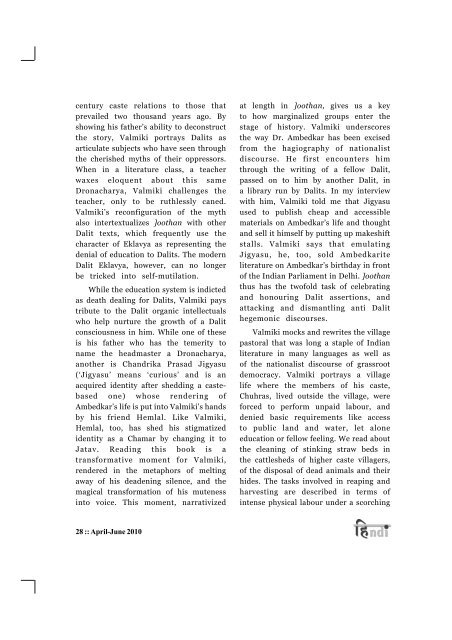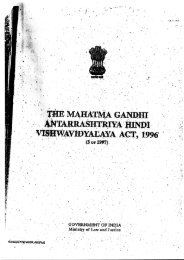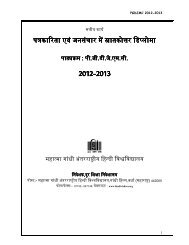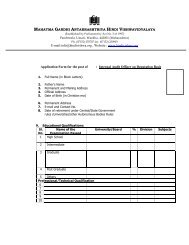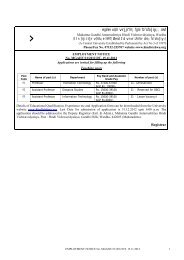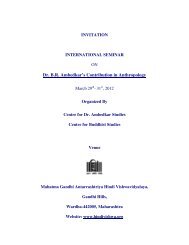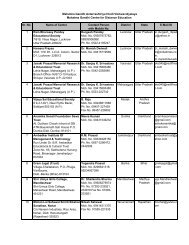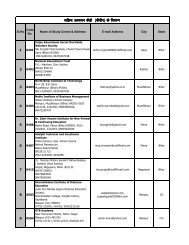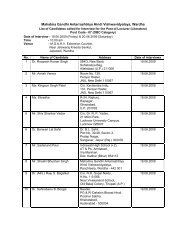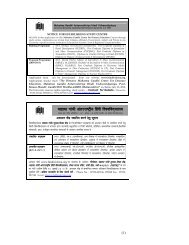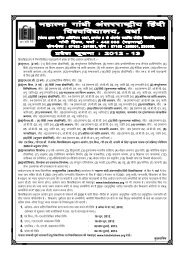Mamta Kalia
Mamta Kalia
Mamta Kalia
Create successful ePaper yourself
Turn your PDF publications into a flip-book with our unique Google optimized e-Paper software.
century caste relations to those that<br />
prevailed two thousand years ago. By<br />
showing his father’s ability to deconstruct<br />
the story, Valmiki portrays Dalits as<br />
articulate subjects who have seen through<br />
the cherished myths of their oppressors.<br />
When in a literature class, a teacher<br />
waxes eloquent about this same<br />
Dronacharya, Valmiki challenges the<br />
teacher, only to be ruthlessly caned.<br />
Valmiki’s reconfiguration of the myth<br />
also intertextualizes ]oothan with other<br />
Dalit texts, which frequently use the<br />
character of Eklavya as representing the<br />
denial of education to Dalits. The modern<br />
Dalit Eklavya, however, can no longer<br />
be tricked into self-mutilation.<br />
While the education system is indicted<br />
as death dealing for Dalits, Valmiki pays<br />
tribute to the Dalit organic intellectuals<br />
who help nurture the growth of a Dalit<br />
consciousness in him. While one of these<br />
is his father who has the temerity to<br />
name the headmaster a Dronacharya,<br />
another is Chandrika Prasad Jigyasu<br />
(‘Jigyasu’ means ‘curious’ and is an<br />
acquired identity after shedding a castebased<br />
one) whose rendering of<br />
Ambedkar’s life is put into Valmiki’s hands<br />
by his friend Hemlal. Like Valmiki,<br />
Hemlal, too, has shed his stigmatized<br />
identity as a Chamar by changing it to<br />
Jatav. Reading this book is a<br />
transformative moment for Valmiki,<br />
rendered in the metaphors of melting<br />
away of his deadening silence, and the<br />
magical transformation of his muteness<br />
into voice. This moment, narrativized<br />
28 :: April-June 2010<br />
at length in ]oothan, gives us a key<br />
to how marginalized groups enter the<br />
stage of history. Valmiki underscores<br />
the way Dr. Ambedkar has been excised<br />
from the hagiography of nationalist<br />
discourse. He first encounters him<br />
through the writing of a fellow Dalit,<br />
passed on to him by another Dalit, in<br />
a library run by Dalits. In my interview<br />
with him, Valmiki told me that Jigyasu<br />
used to publish cheap and accessible<br />
materials on Ambedkar’s life and thought<br />
and sell it himself by putting up makeshift<br />
stalls. Valmiki says that emulating<br />
Jigyasu, he, too, sold Ambedkarite<br />
literature on Ambedkar’s birthday in front<br />
of the Indian Parliament in Delhi. ]oothan<br />
thus has the twofold task of celebrating<br />
and honouring Dalit assertions, and<br />
attacking and dismantling anti Dalit<br />
hegemonic discourses.<br />
Valmiki mocks and rewrites the village<br />
pastoral that was long a staple of Indian<br />
literature in many languages as well as<br />
of the nationalist discourse of grassroot<br />
democracy. Valmiki portrays a village<br />
life where the members of his caste,<br />
Chuhras, lived outside the village, were<br />
forced to perform unpaid labour, and<br />
denied basic requirements like access<br />
to public land and water, let alone<br />
education or fellow feeling. We read about<br />
the cleaning of stinking straw beds in<br />
the cattlesheds of higher caste villagers,<br />
of the disposal of dead animals and their<br />
hides. The tasks involved in reaping and<br />
harvesting are described in terms of<br />
intense physical labour under a scorching


